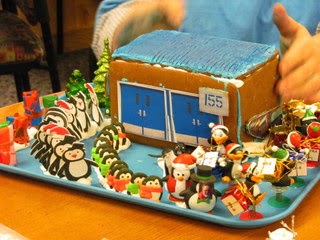WISSARD camp, Antarctica
On Friday we went down to the runway and boarded an LC-130 headed out to the CReSIS camp. We were a bit dismayed to find ourselves back on the ground after only twenty minutes in the air due to a problem with the beacon that communicates our location to other planes. However, the Air
Force crew kept working on the problem and got it fixed. By the afternoon, one week delayed from our originally scheduled flight, we found ourselves safely on the Whillans Ice Stream. The camp was already 21 people full, with the CReSIS scientists and engineers, cook, mechanics, pilots and weather woman. It was great to have a warm dinner (compliments, Sarah) after unloading the plane.
The next day we went out to the Subglacial Lake Whillans drill site to retrieve some of our equipment stored from last season.
 |
| The trailers and equipment at Subglacial Lake Whillans |
 |
| A well-marked borehole, data logger and solar panels to allow data collection to continue. |
The rest of us went to a GPS station that holds two years' worth of data on the ice stream's motion. The four of us each dug five foot deep holes to remove the anchors for the solar panel that powers the
station. I'm happy it does not snow much here or we would have had much farther to dig. I've shoveled snow in Wisconsin before, but I'm developing new strategies for digging straight down. Matt and I also reoccupied a location with GPS that has been visited since the 1990s,
making this one of the longest records of ice motion on the continent.
We are enjoying our time at CReSIS camp very much. The weather has been fairly nice; mostly around 20 degrees F with a bit of fog and some light snow. Fog is no good for the CReSIS folk because they depend on good visibility for flying their radar, but we don't mind too much. It is
lovely to have the company here, and it will feel very quiet when the 7 of us head out on our own. Grace and Neil went skiing last night, and I enjoyed a quiet evening of reading - it was hard to put the book down without the cue of a darkening sky. Tonight Slawek gave a great science talk to the camp about the changing view of life beneath the ice sheet and last season's discovery of life within Subglacial Lake Whillans.















































